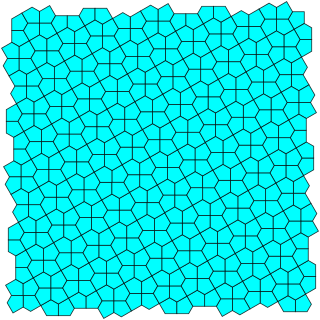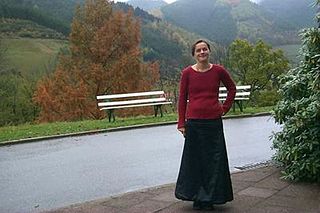

In applied mathematics, a Gilbert tessellation [1] or random crack network [2] is a mathematical model for the formation of mudcracks, needle-like crystals, and similar structures. It is named after Edgar Gilbert, who studied this model in 1967. [3]

Applied mathematics is the application of mathematical methods by different fields such as science, engineering, business, computer science, and industry. Thus, applied mathematics is a combination of mathematical science and specialized knowledge. The term "applied mathematics" also describes the professional specialty in which mathematicians work on practical problems by formulating and studying mathematical models. In the past, practical applications have motivated the development of mathematical theories, which then became the subject of study in pure mathematics where abstract concepts are studied for their own sake. The activity of applied mathematics is thus intimately connected with research in pure mathematics.

Mudcracks are sedimentary structures formed as muddy sediment dries and contracts. Crack formation also occurs in clay-bearing soils as a result of a reduction in water content.

A crystal or crystalline solid is a solid material whose constituents are arranged in a highly ordered microscopic structure, forming a crystal lattice that extends in all directions. In addition, macroscopic single crystals are usually identifiable by their geometrical shape, consisting of flat faces with specific, characteristic orientations. The scientific study of crystals and crystal formation is known as crystallography. The process of crystal formation via mechanisms of crystal growth is called crystallization or solidification.
In Gilbert's model, cracks begin to form at a set of points randomly spread throughout the plane according to a Poisson distribution. Then, each crack spreads in two opposite directions along a line through the initiation point, with the slope of the line chosen uniformly at random. The cracks continue spreading at uniform speed until they reach another crack, at which point they stop, forming a T-junction. The result is a tessellation of the plane by irregular convex polygons.

In probability theory and statistics, the Poisson distribution, named after French mathematician Siméon Denis Poisson, is a discrete probability distribution that expresses the probability of a given number of events occurring in a fixed interval of time or space if these events occur with a known constant rate and independently of the time since the last event. The Poisson distribution can also be used for the number of events in other specified intervals such as distance, area or volume.

A tessellation of a flat surface is the tiling of a plane using one or more geometric shapes, called tiles, with no overlaps and no gaps. In mathematics, tessellations can be generalized to higher dimensions and a variety of geometries.

A convex polygon is a simple polygon in which no line segment between two points on the boundary ever goes outside the polygon. Equivalently, it is a simple polygon whose interior is a convex set. In a convex polygon, all interior angles are less than or equal to 180 degrees, while in a strictly convex polygon all interior angles are strictly less than 180 degrees.
A variant of the model that has also been studied restricts the orientations of the cracks to be axis-parallel, resulting in a random tessellation of the plane by rectangles. [4] [5]

In Euclidean plane geometry, a rectangle is a quadrilateral with four right angles. It can also be defined as an equiangular quadrilateral, since equiangular means that all of its angles are equal. It can also be defined as a parallelogram containing a right angle. A rectangle with four sides of equal length is a square. The term oblong is occasionally used to refer to a non-square rectangle. A rectangle with vertices ABCD would be denoted as
Gray et al. (1976) write that, in comparison to alternative models in which cracks may cross each other or in which cracks are formed one at a time rather than simultaneously, "most mudcrack patterns in nature topologically resemble" the Gilbert model.







